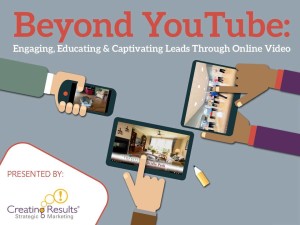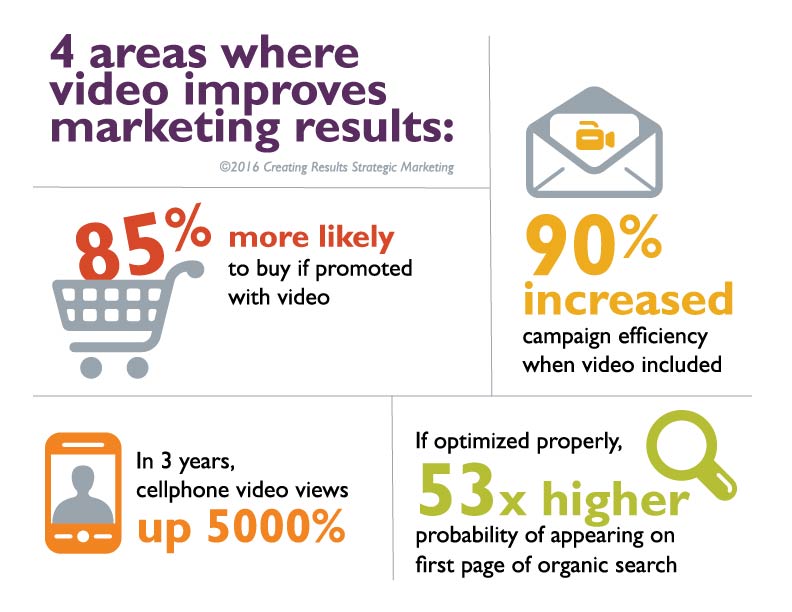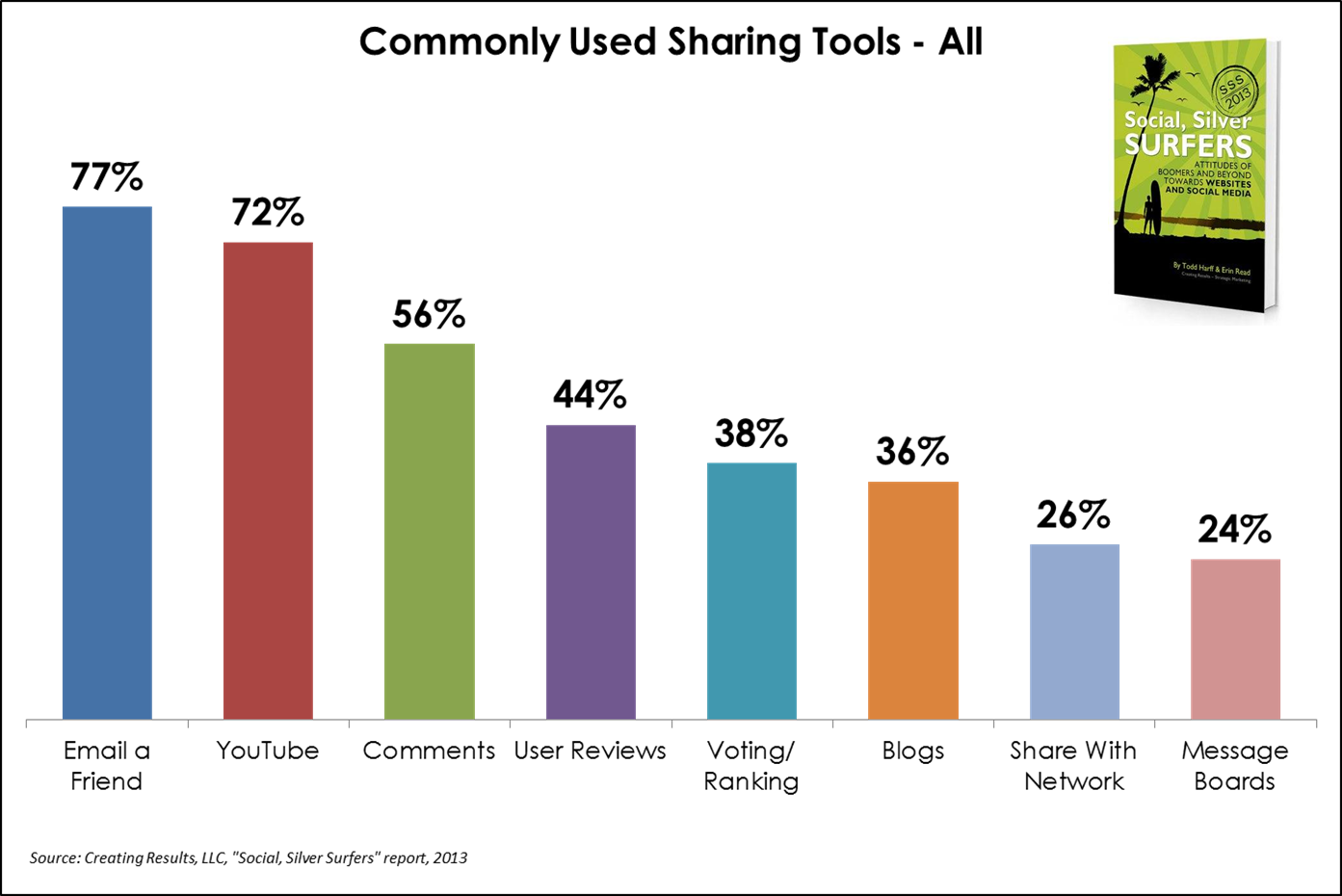More people of all ages are watching / sharing online videos than ever before.
And studies show video marketing has power to motivate consumers – including Baby Boomers and Seniors – to act or buy.
Yet many senior providers don’t know how to integrate video into their marketing.
 Over the next month, Jessica Ruhle and I will be sharing best practices for creating both product and lifestyle videos to strategically position senior-serving organizations. We’re honored to have been invited to speak to the topic at both the LeadingAge Massachusetts and LeadingAge Pennsylvania conferences.
Over the next month, Jessica Ruhle and I will be sharing best practices for creating both product and lifestyle videos to strategically position senior-serving organizations. We’re honored to have been invited to speak to the topic at both the LeadingAge Massachusetts and LeadingAge Pennsylvania conferences.
We wanted to first share a preview of that program with our blog readers and solicit your thoughts – how are you engaging, educating or captivating leads through video?
Why Should CCRCs Use Online Video?
Why are continuing care retirement communities (CCRCs), 55+ housing or any organizations focused on older adults considering video at all? Is it because executives are demanding it? Because they see everyone doing it?
Here’s a better why: 1.8 million words.
That’s the value of one minute of video, according to Dr. James McQuivey of Forrester Research.
But why say it in words, when I can say it with video?
Video improves the results of a marketing program in four key areas: search, mobile, email effectiveness and purchase. (We created this handy infographic for reference or sharing.)

Video can be used at every step of the purchase journey to build engagement and shorten the sales cycle.
Are Seniors Really Using Online Video?
If interest in this topic at aging industry conferences is any indication, we’re already seeing a breakdown in old stereotypes about video being a “young person’s game.”
It’s estimated 100 million people watch online video each day – including 70.9 million Millennials, 4.58 million Gen Xers, and 35.8 million Baby Boomers.
For Gen X (adult children, influencers and caregivers) digital video is more popular than social networking.
The same is true for Baby Boomers, per eMarketer:

Creating Results’ own research backs this up. In 2013, when we asked Social Silver Surfers which online sharing tools they used, 72% said YouTube video.

We’re eager to see how those numbers have changed in our 2016 edition, expected out in June!
How Do You Choose the Right Type for Your Video Content?
There are a wide variety of video types used in marketing senior living, 55+ housing or other services for older adults.
It’s time to think beyond the testimonial!
We’re not saying never do a testimonial. We are saying there might be other formats better suited for the message you’re trying to convey. (And there are also other ways of presenting testimonials. It doesn’t have to be a seated older adult, another talking head!)
Consider the following video types for any senior-focused product or service:
- Welcome messages
- People profiles
- Product videos – promotional overviews, demos, reviews
- Educational
- “How to” or explainer
- Video as infographic
- User generated
- Video ads
To determine what type of video you should create, first you must know the story you want to tell, and how it meets your prospects’ needs. Next, consider both your budget and the effectiveness of each type.
A national survey done by Ascend2 and Research Partners had a small number of respondents but still offers insight.

PEOPLE authentically providing customer testimonials are most effective with PEOPLE who are considering becoming customers.
Here is an example of an effective testimonial video. Created for a CCRC in Needham, Mass., it actually features testimonials from both “customers” (residents of the retirement community) and long-time team members.
The mix of voices made the content less sales-y, more celebratory and more effective.
We’re also partial to this “explainer” video created for a 55+ lifestyle community developer. The video is featured on their website and has been distributed by email and social media.
Learn More!
This post addressed the WHY, WHO and WHAT type of video marketing.
Want some HOW TO?
Be sure to join us for more inspiration and best practices at:
- LeadingAge Massachusetts’ annual meeting: May 19 at 10:30 am in Boxborough, Mass.
- LeadingAge Pennsylvania’s 2016 conference: June 17 at 10:30 am in Hershey, Penn.
Whether or not you can join us at either session, we want to help your team capture and captivate leads through online video.
You’ll find resource links and a white paper – “9 Myths of Digital Video” – at www.CreatingResults.com/videomarketing.
We want to learn from you, too!
Please share your thoughts about the use of online video in marketing to active adults in the comments section, below: What type of video content have you implemented for your organization? What concerns do you have that might be holding you back from creating more video?
We’d love to be able to answer questions here on our blog or in person at an upcoming conference.


